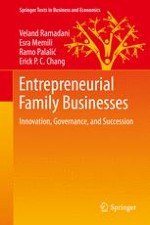This book provides an extensive overview of family business-related topics such as context and uniqueness, lifecycle and ownership configurations, conflict management, corporate governance, succession challenges, internationalization, innovation, and socioemotional wealth. Each chapter features clear learning objectives, key concepts and terminology, and dedicated case studies to demonstrate the main messages. The book not only considers the day-to-day dynamics in family businesses, but also places substantial emphasis on the entrepreneurial skills needed for these businesses to survive and thrive, today and tomorrow. In addition, it elaborates and discusses a number of best practice examples, which offer valuable guidance not only for scholars, but also for students who wish to study these challenges.
